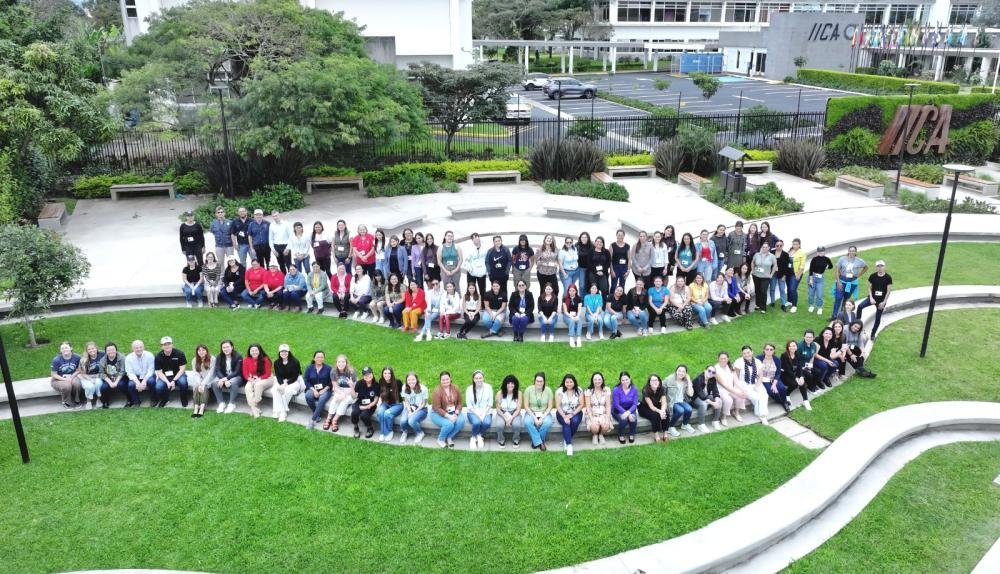NASA Harvest Special Initiative Highlight: Latin America
NASA Harvest Latin America is a regional initiative dedicated to advancing agricultural monitoring, food security, and sustainable practices across the Latin American region. Our mission is to leverage satellite technology, data-driven insights, and local expertise to empower communities, foster collaboration, and develop innovative tools that support sustainable agricultural practices and informed decision-making. Below, we outline the key areas of focus that drive our work in Latin America.
1. Community and Capacity Building: GEOGLAM Crop Monitor Legacy
At the heart of NASA Harvest Latin America's efforts is a commitment to community building, deeply rooted in the legacy of the GEOGLAM Crop Monitor initiative. By working closely with local partners, agricultural organizations, and stakeholders, we aim to create a network of collaboration and knowledge sharing that spans the entire region.
Expanding on that previous work, The Global Crop Monitor was established to address the need for more frequent monthly crop monitoring in countries beyond the G20 and those facing food insecurity. Most Latin American countries fall into that category, and the synthesis map is part of the monthly issue of the AMIS Market Monitor.
The GEOGLAM Crop Monitor legacy has provided a robust foundation for our work, enabling us to build strong partnerships with institutions such as the Buenos Aires Grain Exchange, ministries of agriculture, agricultural technical institutes, and educational organizations across Latin America. Through programs like our high school education initiative, we have engaged young minds and future leaders in the importance of agricultural monitoring and the role of satellite technology in securing our food systems. This program not only educates students about the latest in remote sensing and data analysis but also empowers them to become active participants in their communities' agricultural futures providing them with hands-on experience.
By fostering these connections, NASA Harvest Latin America is creating a resilient community of practice that is better equipped to respond to challenges, share expertise, and implement best practices in agricultural monitoring.
As a result of our stakeholder engagement through AMA and GEOGLAM, NASA Harvest Latin America developed a deep understanding of the use of remote sensing in agriculture in the region. An example is the report about the state of remote sensing published with IICA and FAO, where the urgent need for capacity building in remote sensing knowledge is evident. NASA Harvest Latin America focuses on training.
NASA Harvest Latin America is also committed to developing advanced courses, such as the collaboration between the University of Maryland, the Ministry of Education, and the Bolsa de Cereales in Argentina. This initiative aims to train professionals in advanced remote sensing techniques, providing them with the tools and resources needed to make an immediate impact in their fields of expertise.
2. Empowering Communities with Resources, Data, and Tools
Empowerment is a core principle of NASA Harvest Latin America's mission. We are committed to equipping communities with the resources, data, and tools necessary to enhance agricultural monitoring and ensure food security. Through our collaborative efforts with organizations like SIMA and our partnerships with entities such as UCropit, we provide access to cutting-edge machine learning models and data analytics tools that are crucial for field-scale crop yield estimation and monitoring crop conditions.
Our work extends to understanding and addressing broader socio-environmental issues, such as the link between climatic stresses and human migration in rural areas, as evidenced by our studies in Guatemala where we studied the links between climatic stresses and rural emigration. By analyzing these complex interactions, we help communities better understand the factors affecting their agricultural productivity and resilience.
Moreover, initiatives like the IICA NASA Harvest Latin America project emphasize the importance of cross-regional knowledge exchange. Through workshops and capacity-building programs we ensure that diverse voices are heard and that local communities have the tools they need to thrive in a changing climate.
3. Technical Development of New Tools for Agriculture Monitoring, Policy Articulation
Innovation drives our technical development efforts at NASA Harvest Latin America. We focus on creating and refining advanced tools that improve agricultural monitoring capabilities and support policymakers in making data-driven decisions, such as the Agmet tool, which integrates satellite-derived meteorological data with ground observations to offer insights into precipitation, temperature, and other climatic factors that affect crop growth and yield.
Through our collaboration with UCropit, we are enhancing traceability and metrics for crops in South America, ensuring that agricultural practices are not only efficient and profitable but also regenerative and sustainable.
Our work with regional organizations like SICA and various universities across Latin America showcases our commitment to advancing research and development in agricultural technology. By fostering innovation and developing new methodologies for satellite data utilization, we provide policymakers with the insights they need to make informed decisions that bolster food security and promote sustainable agricultural practices.
In addition, we are continuously working on refining machine learning models and satellite data processing techniques to provide more accurate and timely agricultural forecasts. These technical advancements are crucial for anticipating and mitigating the impacts of climatic variability, ultimately contributing to more resilient agricultural systems.
NASA Harvest Latin America is dedicated to building a sustainable and resilient agricultural future for the region. By focusing on community building, empowering local stakeholders, and advancing technical innovation, we aim to create a lasting impact that enhances food security and promotes sustainable practices throughout Latin America. Join us in our mission to harness the power of satellite technology and data to support agriculture and food security in the region.






